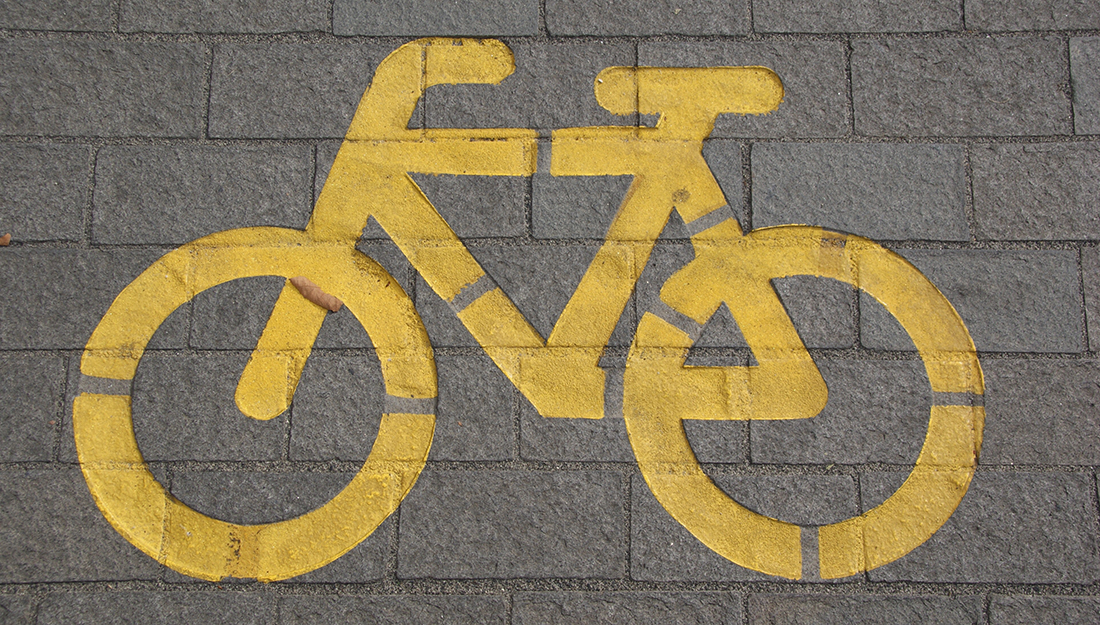- Rae Lynn Mitchell
- Public Health, Research, Show on VR homepage
Building better biking
Researchers investigate program to expand bicycle infrastructure in South Texas

Physical activity has been shown to be effective at preventing obesity and associated health problems such as type 2 diabetes. However, some communities lack adequate parks, bike lanes, sidewalks and other infrastructure needed to support and encourage safe outdoor exercise. Additionally, people living in such communities often have lower incomes, which can prevent them from accessing paid fitness facilities. Thus, improving the built environment in these communities should improve physical activity among residents, leading to improved health.
A new public health brief published in the journal Preventing Chronic Disease reports on a recent effort to increase physical activity in Hidalgo County, Texas, a county on the Texas-Mexico border that is home to more than 850,000 people, around one-third of whom are obese. In this brief, Texas A&M University Health Science Center (Texas A&M Health) and Texas A&M School of Public Health researchers Evelia Castillo, MPH, Monica Campos-Bowers, DrPH, and Marcia G. Ory, PhD, MPH, investigated the efforts of a community-driven program in Hidalgo County aimed at improving bicycle infrastructure.
Launched in 2015, the Working on Wellness (WoW) program, an initiative funded by the Centers for Disease Control and Prevention, focused on health interventions in Hidalgo County. The WoW project was the forerunner of Texas A&M Healthy Texas, an initiative of Texas A&M Health and Texas A&M AgriLife Extension Service that promotes and fosters preventive health.
“Consistent with Healthy Texas, WoW’s aim was to improve health outcomes using a policy, systems and environmental (PSE) approach to create sustainable changes in the community,” said Ory, the project principal investigator.
The first step in this intervention was identifying the needs of the community and developing partnerships with local government and other organizations, businesses and the public. WoW brought together the Hidalgo County Metropolitan Planning Organization, the South Texas Juvenile Diabetes Association and several local businesses to not only gain community support but to ensure the communities’ actual needs were being addressed. Ory emphasizes that “this collaborative approach is a hallmark of PSE interventions, which are still rarely used in public health interventions.”
Once the initial partnerships were formed, the intervention’s next aim was an assessment of Hidalgo County’s built environment, which found that the infrastructure needed for physical activity, such as sidewalks and bike lanes, was lacking. Partners began identifying and mapping possible locations for bike lanes and kicked off projects to start improving street connectivity and expanding bicycle infrastructure. Research has found that bike lanes increase bicycle ridership and physical activity among the public even when controlling for climate, land use and other factors, making the addition of bike lanes a clear priority.
In 2016, WoW’s efforts came into bloom, with five miles of bike lanes created in the city of Weslaco. WoW partners also launched an advocacy program called the Weslaco Bikearoos. This program organized twice-weekly group bicycle rides and held regular bike rodeos, which were events for teaching children bicycle safety and giving them a safe place to practice their riding skills. Local businesses got involved in the program soon after, joining the Bicycle Friendly Business program established in partnership with the Hidalgo County Metropolitan Planning Organization in 2017. More than 50 businesses throughout Hidalgo County participated in this program, providing bike racks, water refill stations and other amenities for bicyclists.
On the government side, 2017 saw the creation of a new master plan for hiking and biking trails in the city of Weslaco that aimed to make walking and biking viable forms of transportation. In 2018, Weslaco added an additional half mile of bike lanes, and Hidalgo County’s Bicycle and Pedestrian Advisory Committee adopted a new action plan to further improve walking and bicycling infrastructure throughout the county.
Castillo, the project manager, notes several public health implications arising from WoW’s PSE intervention. “The use of a PSE approach increases the likelihood of community buy-in and ensures that interventions build on the community’s strengths and resources,” she said. “By engaging with the community, public health experts gain a better understanding of the community’s needs and the challenges they face. In the case of Hidalgo County, the WoW intervention has led to improvements in bicycle infrastructure and built partnerships between local government, businesses and other organizations that will be valuable in continued efforts to improve the health of residents.”
The success of the WoW program shows the value of PSE approaches to public health interventions; however, further research is needed to understand how to better integrate PSE methodology in conventional public health interventions.
Media contact: media@tamu.edu


